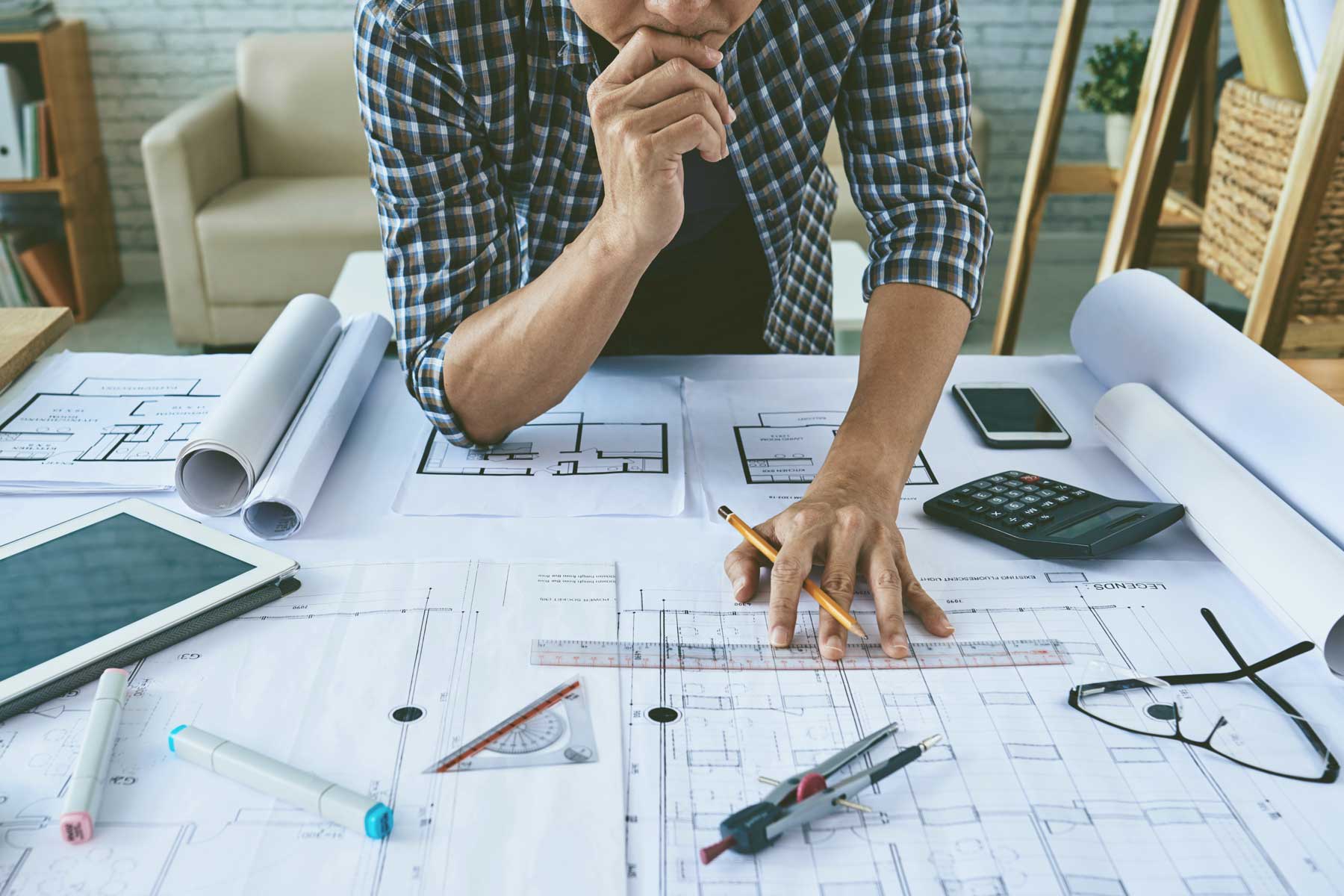Architect Insights on Combining Form and Function
Architect Insights on Combining Form and Function
Blog Article
Understanding the Diverse Occupation Paths Available for Aspiring Architect
As an aspiring Architect, you have a globe of occupation paths waiting for you. Whether you're drawn to traditional architecture or the nuances of lasting design, there's a niche that straightens with your rate of interests.
Traditional Architecture: Creating Structures and buildings
Traditional architecture concentrates on making structures and structures that blend performance with aesthetic appeal. As you explore this area, you'll value the detailed equilibrium in between kind and function. You'll find out to attract ideas from historical styles, integrating aspects like proportion, products, and craftsmanship. Your designs can reflect cultural heritage, showcasing regional practices while fulfilling modern requirements.
You'll develop skills in drafting, model-making, and site analysis, allowing you to visualize and communicate your ideas efficiently. Engaging with clients, you'll need to recognize their vision and convert it right into viable layouts.
Moreover, developing codes and sustainability methods are crucial in your job, guaranteeing your structures are eco pleasant and risk-free. As you expand in your occupation, you'll locate opportunities in domestic, commercial, or perhaps repair tasks, each offering one-of-a-kind difficulties. Accepting typical architecture leads the way for a satisfying occupation that admires the past while shaping the future.
Urban Planning: Forming Neighborhoods and Public Spaces
As a hopeful Architect, you can play an essential role as a metropolitan coordinator, changing just how areas connect and work. By employing area engagement approaches, you'll ensure that homeowners have a voice fit their setting. Plus, incorporating sustainable layout principles will certainly help produce rooms that not only fulfill today's needs however also secure the future.
Role of Urban Planners
While many could assume of designers as the single dreamers behind structures, metropolitan organizers play a vital function in shaping the wider landscape of neighborhoods and public areas. By teaming up with numerous stakeholders, you'll assist design parks, transport systems, and household areas that advertise social interaction and availability. Your expertise in spatial style and community characteristics permits you to picture future development while protecting cultural heritage.
Community Involvement Methods
Reliable neighborhood engagement strategies are vital for urban coordinators to ensure that the voices of residents are heard and valued in the preparation procedure. To foster significant discussion, you need to prioritize open discussion forums and workshops where neighborhood participants can express their concepts and problems. By actively incorporating and paying attention feedback, you'll produce rooms that reflect the neighborhood's demands, eventually leading to more sustainable and effective city atmospheres.
Lasting Layout Principles
When creating urban areas, incorporating lasting layout principles is important for developing atmospheres that grow both environmentally and socially. Consider incorporating green rooms, like yards and parks, to improve biodiversity and enhance air top quality.
Designing with water preservation in mind is likewise key-- think of rain yards and permeable surface areas to handle stormwater. Involving area participants during the planning procedure guarantees that the spaces you create meet their needs and encourage social interaction. By welcoming these concepts, you'll add to lively, sustainable metropolitan landscapes that benefit everyone.

Landscape Design: Developing Sustainable Outdoor Atmospheres
As you explore landscape architecture, you'll find necessary style principles that produce practical and lovely outside spaces. Lasting techniques play a crucial function in making sure these atmospheres prosper while lessening environmental effect. Plus, you'll find a selection of job chances that allow you to make a genuine difference in just how people interact with nature.
Layout Principles in Landscape
Recognizing style principles in landscape style is crucial for developing sustainable exterior environments that integrate with nature. You'll need to consider elements like balance, range, and proportion to ensure your styles really feel cohesive and welcoming. Integrating indigenous plants not only boosts biodiversity however also minimizes water use, making your landscape durable. Consider the circulation of space and just how individuals connect with it; pathways and seating areas should invite expedition and leisure. Furthermore, focus on seasonal modifications, making with materials that match the surroundings year-round (Architect). By focusing on sustainability and looks, you can create outdoor areas that enhance the area and advertise health. Embracing these principles will set a solid structure for your career in landscape architecture.
Sustainable Practices Summary
Sustainable practices in landscape architecture not only concentrate on aesthetic appeals however likewise prioritize ecological wellness and source preservation. By integrating native plants, you enhance biodiversity and lower the demand for chemical plant foods and pesticides. Carrying out effective irrigation systems assists save water and minimizes runoff, protecting nearby communities. You can create areas that promote soil health and wellness, such as utilizing organic products and exercising permaculture concepts. In addition, including green facilities, like rain gardens and porous pavements, aids in stormwater monitoring and decreases urban heat. You add to a healthier read more earth and supply rooms that promote area connection when you develop outdoor settings with sustainability in mind. Eventually, these techniques guarantee your layouts benefit both individuals and the environment for years ahead.
Career Opportunities Exploration
With a strong foundation in sustainable practices, landscape design supplies a selection of occupation courses that enable you to make a purposeful influence on the atmosphere. Urban planners commonly team up with landscape designers to create eco-friendly rooms in here urban setups, improving city livability. If you're passionate concerning education, consider coming to be a landscape design educator, motivating future generations.
Sustainable Layout: Focusing on Eco-Friendly Practices
As you discover your profession in architecture, accepting environment-friendly practices can establish you apart in a competitive area. Sustainable layout concentrates on creating structures that reduce environmental effect while boosting passenger wellness. By incorporating renewable products, energy-efficient systems, and lasting building strategies, you'll add to a greener future.
Begin by gaining knowledge of environment-friendly accreditations like LEED or BREEAM, which can bolster your qualifications. Consider just how all-natural light, air flow, and thermal effectiveness can maximize design. Work together with designers and environmental professionals to innovate remedies that minimize waste and preserve sources.
Don't fail to remember the relevance of community involvement-- interesting neighborhood stakeholders can inspire styles that balance with the setting. As customers increasingly prioritize sustainability, your knowledge in green practices will not only bring in tasks but likewise accomplish your interest for responsible design. Accept this crucial element of the career, and view your career grow.
Historical Conservation: Shielding and Bring Back Cultural Heritage
While you start on your building journey, consider the important function of historic preservation in keeping our social heritage. This area concentrates on the security and repair of considerable buildings, sites, and structures that tell the tales of our past. By taking part in historic preservation, you'll aid guard the building tradition that shapes community identification.
As a historical preservation Architect, you'll examine historical significance and analyze the problem of structures. You'll function carefully with historians and preservationists to assure authentic reconstruction methods are employed. This job path allows you to mix creativity with study, enabling you to design services that respect initial products and craftsmanship.
Your work not just adds to sustainability by recycling existing structures but likewise fosters a feeling of satisfaction within neighborhoods. Welcoming this path will assist you become a guardian of history, maintaining the stories and aesthetics that enhance our lives.
Inside Design: Enhancing Indoor Spaces
Historical conservation and indoor architecture both share a dedication to improving the built environment, yet they concentrate on different facets. While historic conservation emphasizes maintaining a framework's cultural and historic value, interior architecture zeroes in on enhancing indoor rooms for functionality and aesthetics.
As a hopeful Architect, you'll discover that interior architecture allows you to blend creative thinking with technical abilities. You'll make spaces that not only look great however likewise advertise convenience and efficiency. This field includes recognizing just how light, color, and products interact within a space, influencing state of mind and functionality.
You'll service various projects, from property homes to industrial workplaces, making sure that each setting fulfills the needs of its occupants. By prioritizing user experience, you can transform interiors into useful and motivating areas, making a considerable influence on just how individuals engage with their surroundings. Accept the opportunity to boost interior settings and form the method people live and work.
Industrial Design: Merging Functionality With Appearances
Commercial style plays a necessary function in developing items that effortlessly mix aesthetics with capability, making certain that what you use daily is not just aesthetically appealing yet additionally functional. As a hopeful Architect, you can involve yourself in this area, concentrating on developing everything from furnishings to customer electronics. Your job includes understanding customer requirements, materials, and making processes, allowing you to produce innovative options that enhance day-to-day experiences.
In industrial design, you'll typically collaborate with designers, marketers, and suppliers, guaranteeing that your styles are not just lovely yet likewise feasible. You'll find out to balance type and feature, focusing on usability without compromising click here style. By sharpening your skills in laying out, 3D modeling, and prototyping, you'll be well-equipped to bring your concepts to life. This job course supplies a dynamic atmosphere where creative thinking meets practicality, making it a satisfying selection for designers curious about shaping the products of tomorrow.
Frequently Asked Concerns
What Educational Accreditations Do I Need to Become an Architect?
To come to be an engineer, you'll need an expert degree in style, commonly a Bachelor's or Master's. In addition, you'll have to complete an internship and pass the Architect Enrollment Assessment to practice legally.
Exist Accreditation Demands for Different Architectural Job Paths?
Yes, there're accreditation requirements for numerous architectural paths. Architect. You'll need to pass examinations, total internships, and in some cases seek specialized training, relying on your chosen emphasis, like landscape style, metropolitan design, or historic conservation
What Software Application Skills Are Essential for Engineers Today?

Exactly How Can I Gain Practical Experience While Studying Style?
You can obtain functional experience by interning at architectural companies, joining design competitors, volunteering for community tasks, or working together with schoolmates on real-world projects. These opportunities boost your skills and construct useful connections in the market.
What Job Opportunities Exist Outdoors Conventional Style Firms?
You can check out numerous work possibilities outside conventional design firms, like metropolitan planning, interior decoration, landscape design, construction administration, realty advancement, or also roles in sustainability consulting. Each deals unique difficulties and incentives.
Whether you're drawn to standard architecture or the nuances of lasting design, there's a specific niche that straightens with your rate of interests.When making city spaces, integrating lasting layout principles is critical for creating atmospheres that grow both ecologically and socially.As you check out landscape style, you'll discover vital style concepts that develop stunning and functional outdoor areas.Understanding style principles in landscape design is crucial for creating sustainable outside atmospheres that balance with nature.In commercial layout, you'll usually collaborate with producers, engineers, and marketers, ensuring that your designs are not just attractive however likewise possible.
Report this page